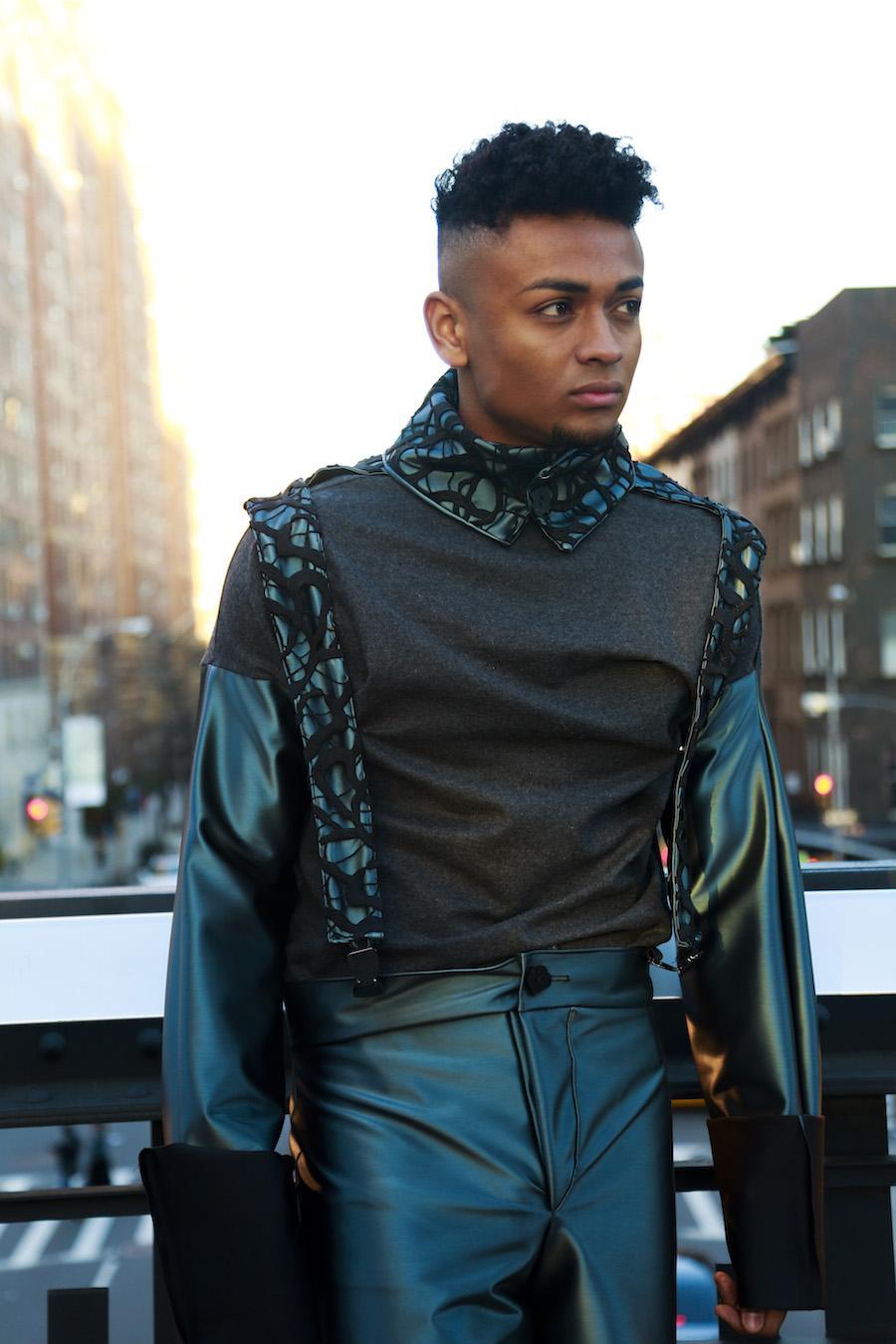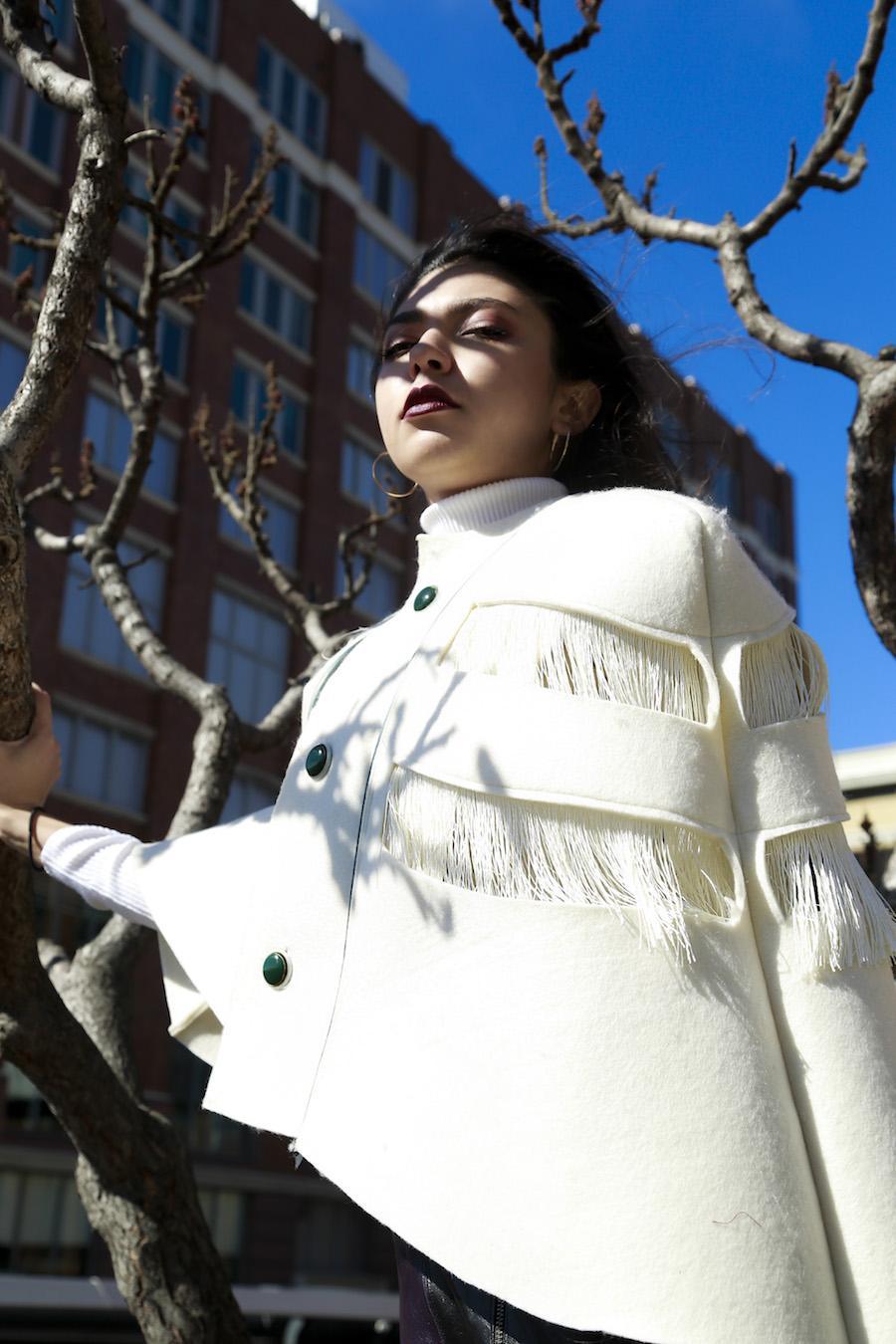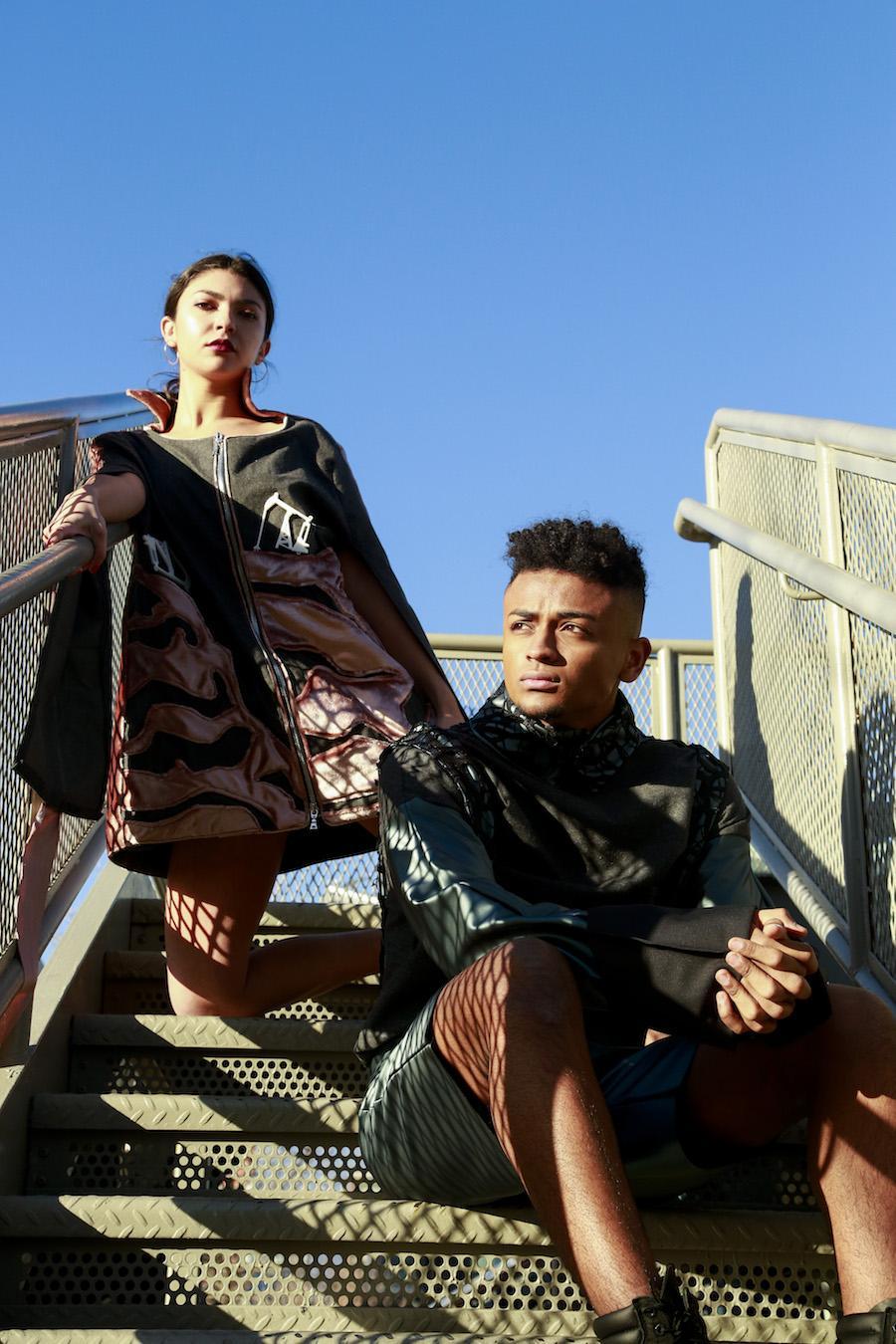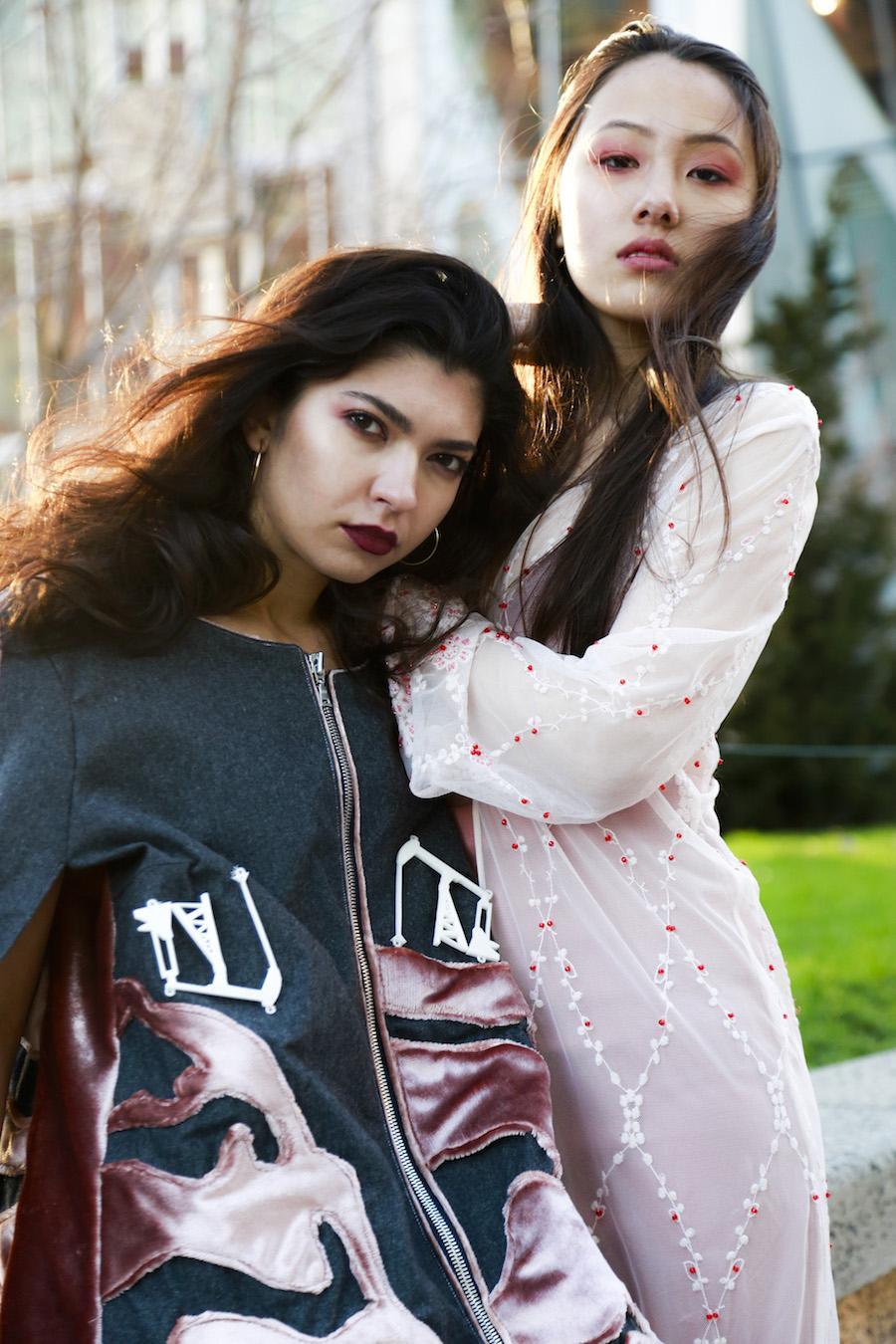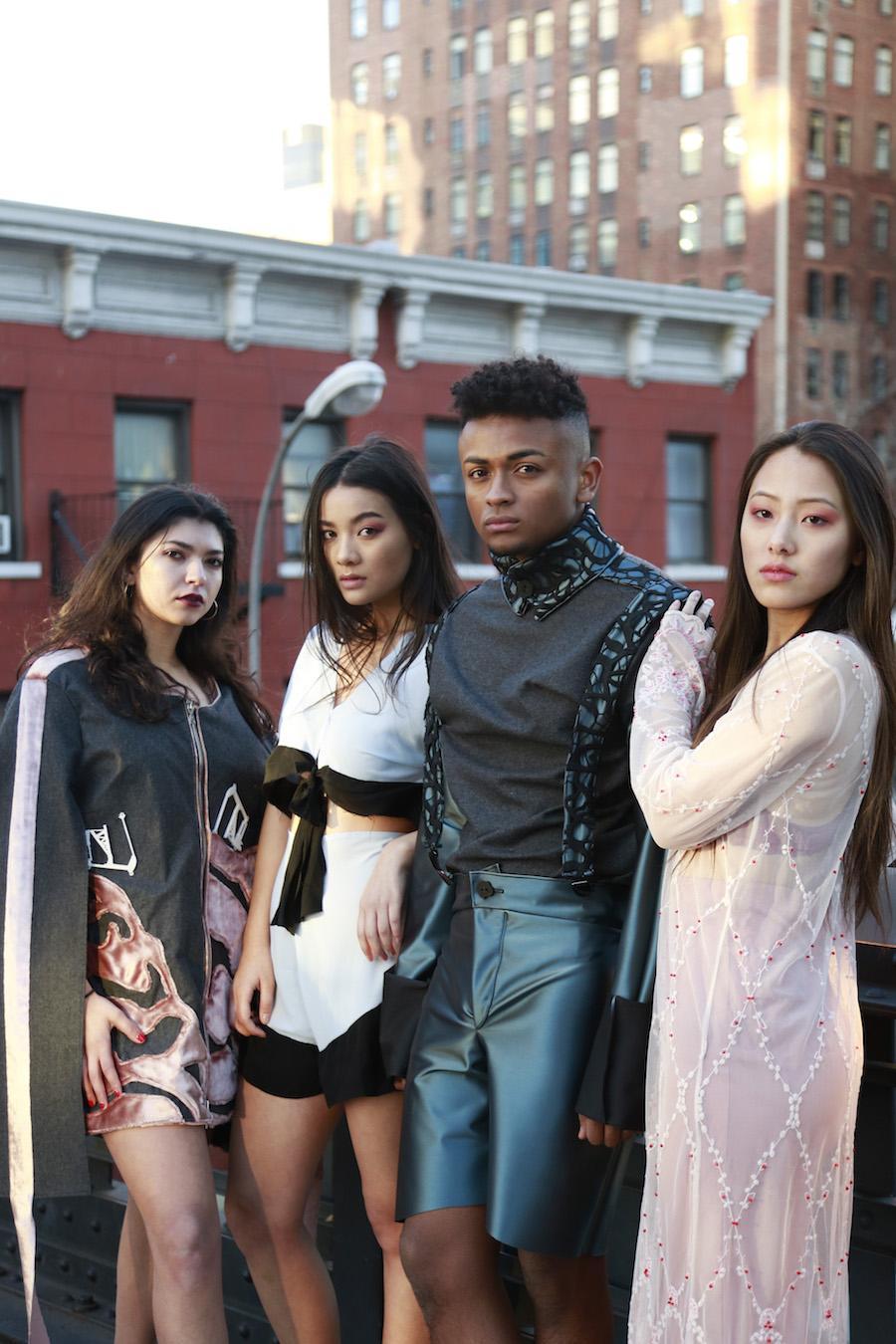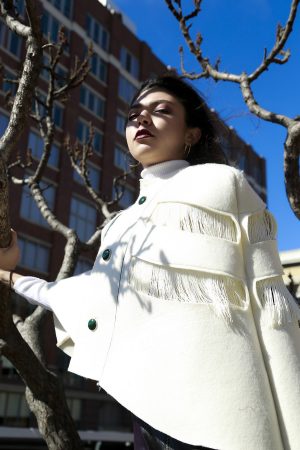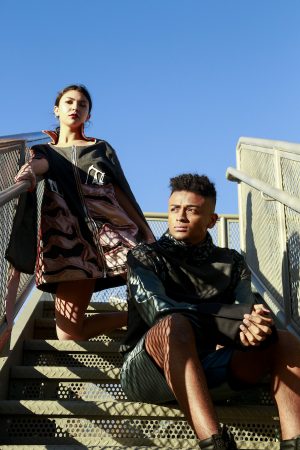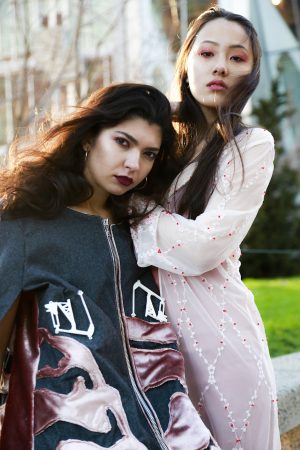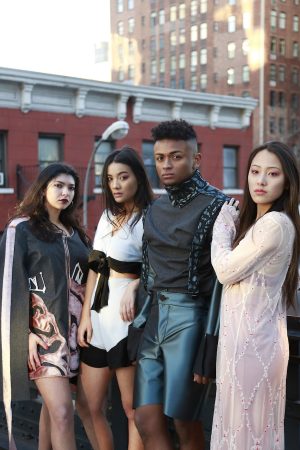Ryan Andrewsen
For Gallatin junior Ryan Andrewsen, sustainability and fashion go hand in hand. An up-and-coming designer, Andrewsen’s body of work and study mainly focus on environmental sustainability, luxury business, art history and costume design. Recently featured in the 2017 Gallatin fashion show, Andrewsen’s collection of chic looks — all made from unconventional materials — was a showstopper and marked another year of designing under Andrewsen’s belt.
A San Francisco Bay Area native, Andrewsen said he only began designing three years ago when he first arrived at NYU.
“I started sketching at a very young age,” Andrewsen said. “Then I began sewing at the beginning of high school, but I would say that I actually started making my own designs during my freshman year at NYU. The more I design, the more my designs have gotten more advanced. I always try and challenge myself by using unconventional materials.”
Because Andrewsen had no formal training, he’s willing to let the process happen organically. In his first collection, he attached thick mohair and wool to recycled plastic fabrics. For his most recent collection, he incorporated upholstery fabrics into his designs.
Despite Andrewsen’s limited experience, he has been featured in the Gallatin fashion show twice — his first collection was shown a year ago and his latest collection, earlier this year.
For Andrewsen, being included in the Gallatin fashion show was a learning experience, especially since NYU doesn’t have a fashion design program. Still, he knows that designing clothes is what he wants to do.
“Designing is definitely the career I want,” Andrewsen said. “The end goal is to either create my own luxury label or be a creative director. For now, I’m just finishing up NYU, and I might go to Europe to a design college afterwards to develop my skills further.”
Andrewsen said he is largely inspired by designers like Alexander McQueen, Gianni Versace and Martin Margiela as well as sustainable designers like Stella McCartney and Alessandro Michele, the creative director of Gucci. He also said that life and experiences influence his work, and he considers himself a “watcher.” Andrewsen also cited nature as a major source of creativity.
“When I’m in my hometown, I like to hike up, enjoy the scenes and draw creativeness from there,” Andrewsen said.
He said his cognizance of sustainability and environmental consciousness was shaped by
his hometown.
“Growing [up] in the San Francisco Bay Area and living in an eco-conscious bubble of people, everybody there tried to do their part,” Andrewsen said. “We banned plastic bags early on, and everyone had Priuses and Teslas and thought they were making a change. But in actuality, they weren’t doing much of anything. Environmental consciousness was sort of ingrained in me, and I became aware of just how little these people were actually doing.”
As both a designer and a consumer, Andrewsen stands up to fast-fashion brands like H&M, Zara and Forever 21 — notable for using environmentally damaging practices — by boycotting the retailers.
“I don’t buy them, I never shop them, I don’t support them,” Andrewsen said.
In the wake of countless sweatshop horror stories — such as the Bangladeshi textile factory that caught fire in 2012, which resulted in the death of over 110 garment workers — Andrewsen said sustainability is one of the largest and most problematic issues in the fashion industry right now.
“Sustainability has more to do with just our impact on the environment,” Andrewsen said. “It has a lot to do with social and cultural issues that are involved with it too, and you need to take those aspects into consideration if you want to classify something as sustainable, such as the human rights of sweatshop workers. There are many facets that go into making something sustainable beyond just being good for the environment.”
Andrewsen believes sustainable fashion deserves more thought and attention — both as consumers with their buying power and as designers with their ability to use unconventional materials to replace older, more detrimental materials.
“If you care about this world, you should care about sustainable fashion,” Andrewsen said. “If we want to keep indulging and falling into the fantasy of fashion, we need the resources. We need the planet that we live on to keep supplying this for us.”
Email Thomas Chou at [email protected].
Ryan Quan is a Deputy Photo Editor for the Washington Square News.
Polina Buchak is the Senior Multimedia Editor at the Washington Square News. She is in Tandon and Tisch, following her passion in Filmmaking and Integrated...

























































































































































